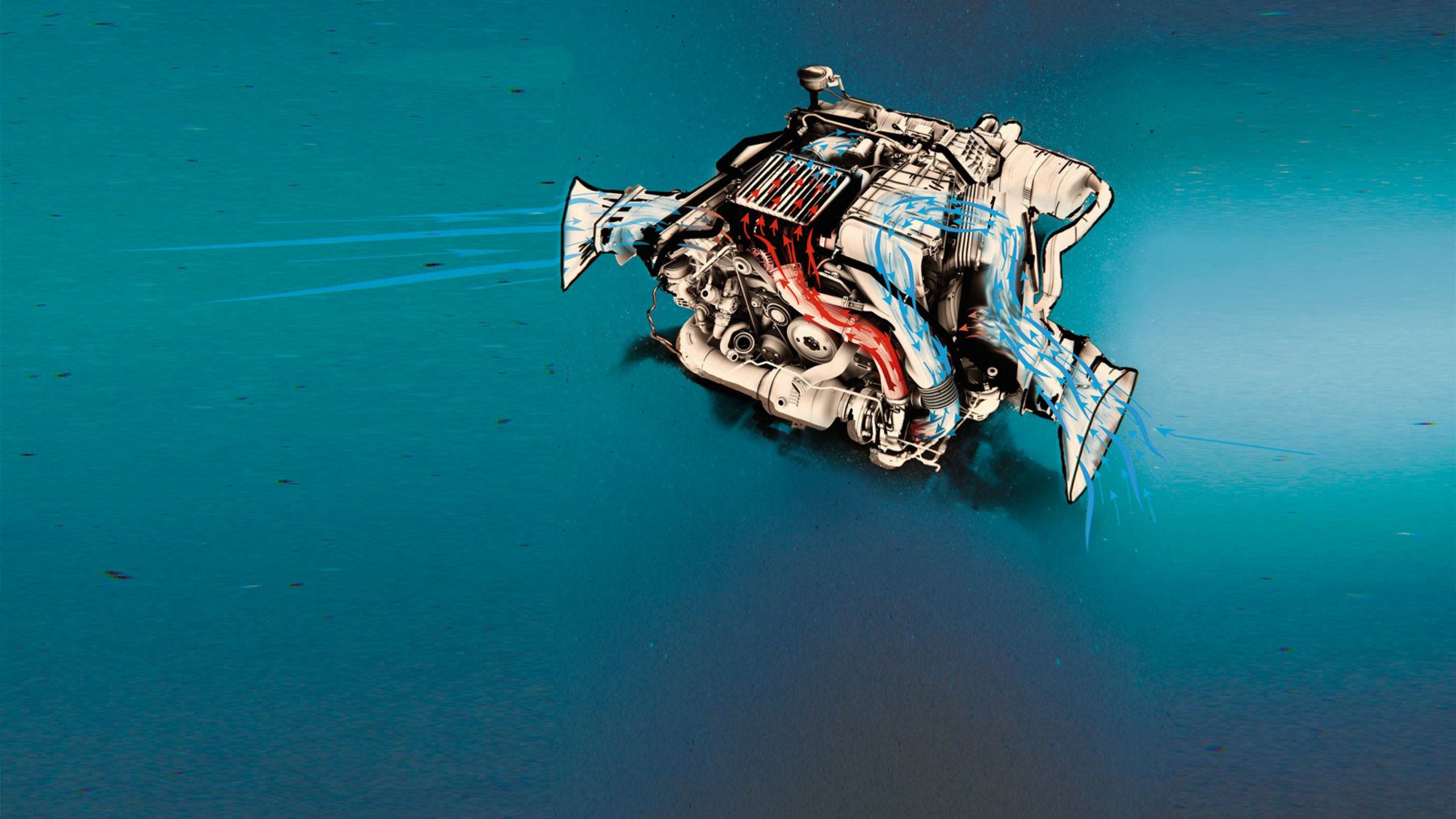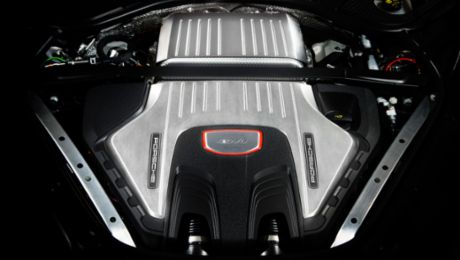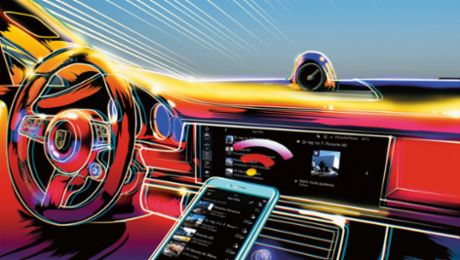Each of these turbo sports cars features a charge-air cooling system, which uses cool air in the combustion chambers to provide more thrust and efficiency. While the Porsche 911 offers direct cooling, the new 718 models will feature indirect charge-air cooling with an integrated water circuit – a high-tech refrigerator for the combustion air.
Motor racing, as usual, was the catalyst of change. In the early 1970s, the idea that a turbocharger – not just increased displacement – could help optimize engine power began to percolate in motor-racing circles. Powered by exhaust flow, turbochargers compress the intake air and pump it into the combustion chambers in large quantities; the additional air forced into the combustion chamber increases the power. In 1974, Porsche harnessed this new technology and introduced the first 911 Turbo.
It was soon discovered that engine efficiency could be further improved by cooling the hot charge air; as soon as the temperature decreases, the air density increases, and with it the volume of the air in the cylinders. The result: more power. So in 1977, Porsche incorporated charge-air cooling into the 911 Turbo model.
718s are equipped with two cooling circuits
However, the 911 uses a rear engine, whereas the 718 Boxster and 718 Cayman feature a mid-mounted engine and therefore sport a very different design. Without wider or larger air-intake openings, it would be impossible to include direct charge-air cooling in the 718s. And installing new cooling air-intakes was off the table for fear of sacrificing the charismatic design of the 718 models. The solution: indirect charge-air cooling. By using water as an additional coolant, there is no need to tamper with the exterior body. The 718s are thus equipped with two cooling circuits: a conventional high-temperature circuit for the engine and a new low-temperature circuit for the charge-air cooling.
Here’s how indirect charge-air cooling works: the combustion air is sucked in and filtered through the air-intake opening on the left side of the car’s body. From there it flows into the turbocharger, where it is compressed and reaches temperatures of up to 335 degrees Fahrenheit. This is where the cooling comes in: the hot air is fed into the integrated charge-air cooler on top of the engine and cooled by plate fins, transferring the heat to the water of the low-temperature circuit. The heated cooling water is then routed into two laterally positioned low-temperature radiators and put “on ice” to be reused in the cooling circuit. Meanwhile, the combustion air – now at the perfect temperature – flows through the throttle valve into the combustion chamber, where it unleashes the power that catapults the 718 forward in a fraction of a second.
Consumption data
911 Turbo: Combined fuel consumption*: 9,1 l/100 km, Combined CO₂-Emission*: 212 g/km
718 Boxster: Combined fuel consumption*: 7,4-6,9 l/100 km; Combined CO₂-Emission*: 168-158 g/km
718 Boxster S: Fuel consumption combined 8.1 l/100 km; CO2-emissions 184 g/km
718 Cayman: Combined fuel consumption*: 7,4-6,9 l/100 km; Combined CO₂-Emission*: 168-158 g/km
718 Cayman S: Fuel consumption combined 8.1 l/100 km; CO2-emissions 184 g/km
Info
Text first published in the Porsche customer magazine Christophorus, No. 377
By Thomas Fuths // Illustration by ROCKET & WINK




